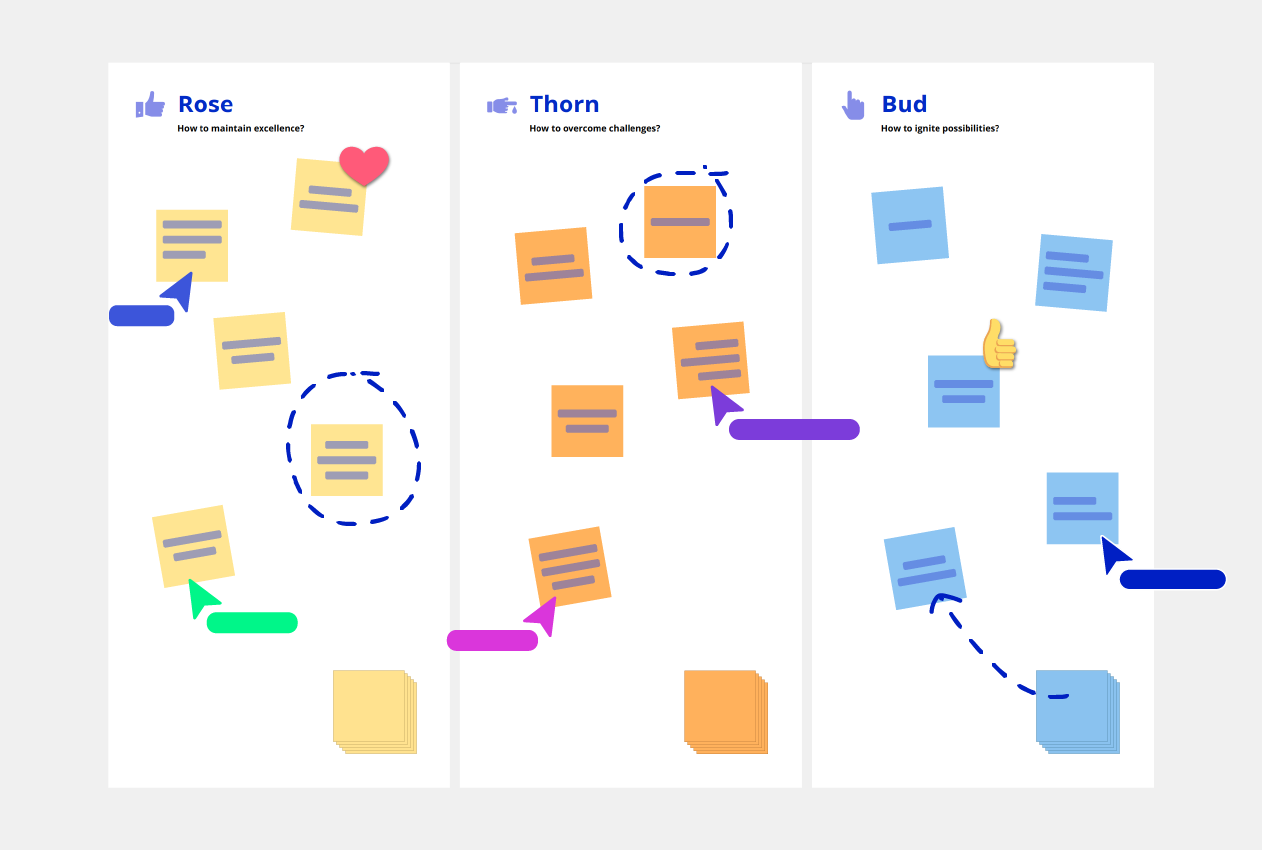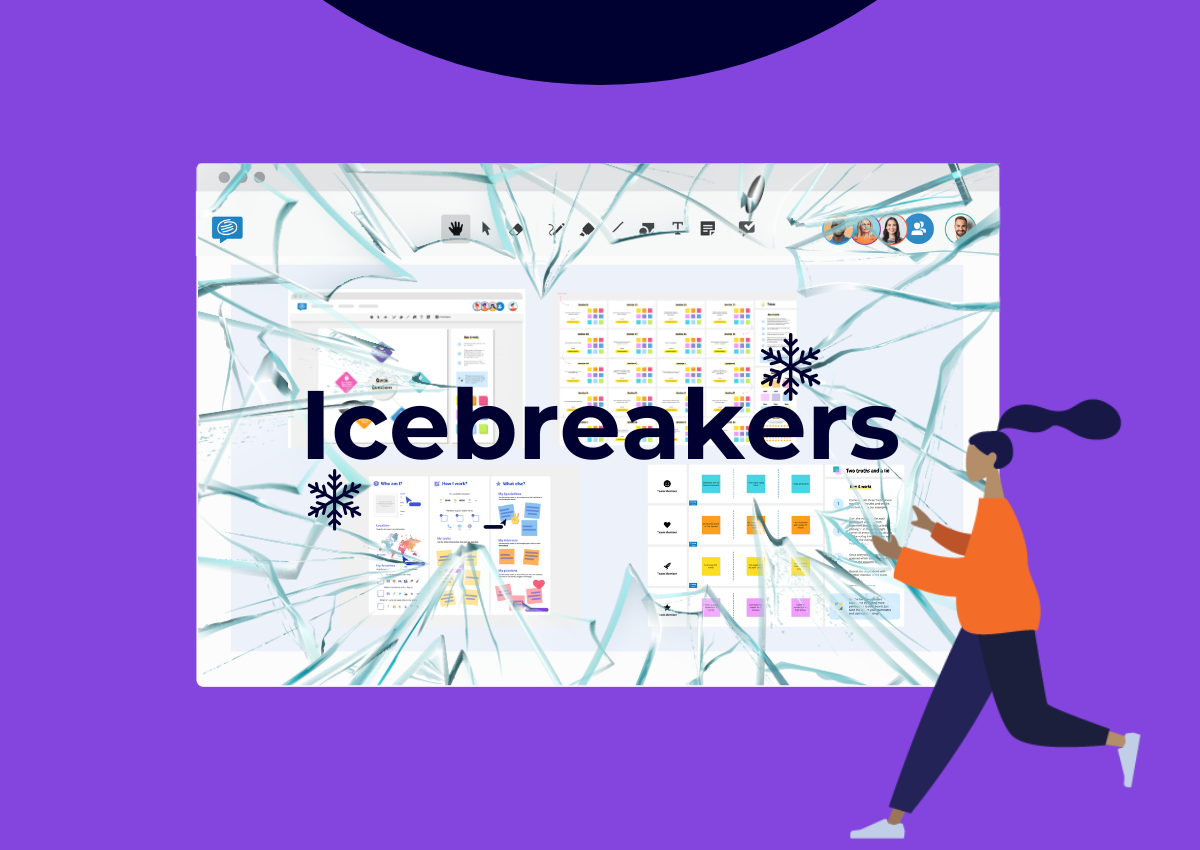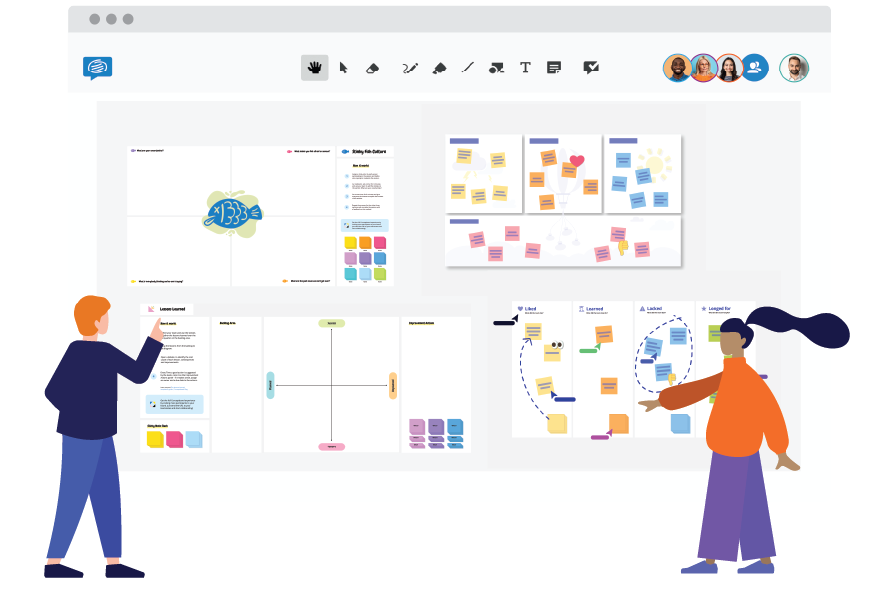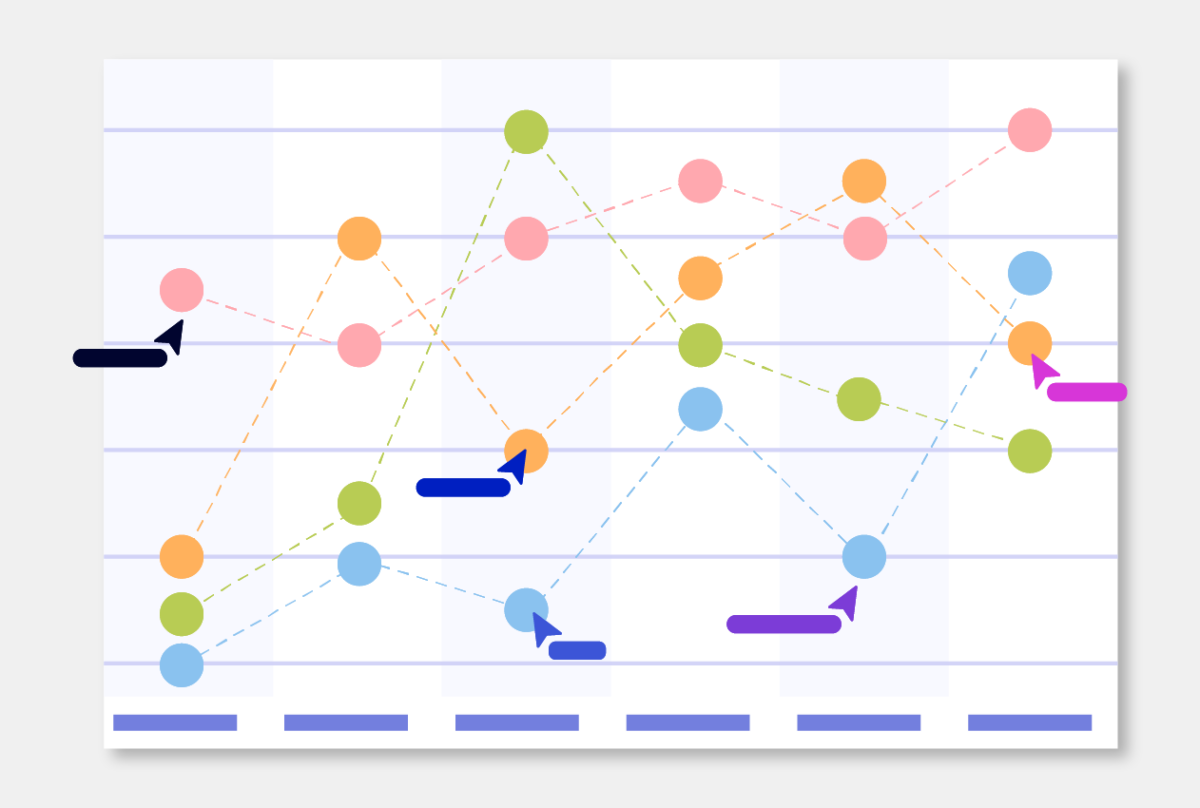What is Rose, bud, thorn?
Rose, bud, thorn is a simple, yet effective exercise to conduct a review or reflect on a past project. It’s a great method for uncovering what worked well (Rose), areas of improvement (Thorn) and what should be focused on or nurtured (Bud).
The versatility of the tool lends itself well to project reviews, sprint retrospectives or even an exercise in mindfulness or introspection. Since introspection is a key element of Design Thinking, this method is used extensively in Design Thinking to identify drivers of success, blockers and opportunities.
The best way to conduct a team Rose, bud, thorn exercise is with the help of an online whiteboard and a ready-made template. This ensures that remote team members can also participate in the activity.
How to use the Rose, Bud, Thorn method
The Rose, bud, thorn activity is an engaging way for your team to honestly evaluate past performance and ideate on the best way forward. But how do you use it?

First, open the template in Conceptboard. As soon as the template opens up, you will see that it already has 3 different columns. These are Rose, Thorn and Bud.
Next, invite your team members to the session by sharing the board with them. This way, each team member can collaborate in real time on the board, irrespective of location.
Once everyone is on the board, participants can use digital sticky notes in order to add their inputs to each section. It is also good practice to assign a moderator to facilitate the session.
How to use the Rose, Bud, Thorn template
The template is divided into 3 sections. Each of these sections throw up a number of questions which act as guidelines to help your team review the past.
Rose (Success factors)
This section answers the simple question: What went well?
These are the things that propelled your team or your project forward. What contributed to the success of your past endeavours? The idea is to identify and reward behaviours that resulted in positive developments so these can be repeated in the future.
Thorn (Challenges)
This section focuses on surfacing past problems. The idea is to have an open and constructive conversation about bottlenecks or challenges that hold back team performance. The key to the success of this activity is to provide a safe space where these issues can be brought to the fore.
Bud (Opportunities)
Long-term project success is determined by the ability of teams to identify threats before they have arisen. The Bud section of the template forces the team to think long-term and identify potential risks that can derail the project. This is a great way of brainstorming future problems and nipping them in the bud!
Next Steps
Once all the inputs and feedback has been added to the board, it’s time to discuss and reflect upon them. A great way of categorizing ideas and identifying patterns is with the help of the Affinity diagram. Thanks to Conceptboard’s cloud-based app, all sticky-notes and feedback are automatically saved for future reference and discussion!
Advantages of Rose, Bud, Thorn
The biggest strength of the method lies in its simplicity. The visual nature of the template provides a structured space for teams to reflect, capture feedback, and discuss solutions. This enables the entire team to be aligned on the larger vision and collaborate on ideas on how to bring the vision to life.
If you liked this template you could also consider using additional retrospective ideas that enable you to maximize the results from your next retrospective session. Or try out similar tools such as the lessons learned or sailboat retrospective template.




